Measurement technology ensures quality in hydrogen production
- Details
- Hits: 972
The global hydrogen economy is in full swing and is an important part of the energy transition. Jumo would like to participate in this development and position itself with its Measurement Technology as a system and solution provider for the Hydrogen production. pressure- And Temperature Sensors, conductivity sensors or Pressure Transmitters ensure quality here.

Contents
- Current status of the global hydrogen economy
- Technical requirements in hydrogen production
- Hydrogen and the future
- Frequently asked questions
Current status of the global hydrogen economy
With the aim of the European Green deals The EU Commission has set itself the goal of no longer emitting any net greenhouse gases by 2050. This means that Europe should become the first climate-neutral continent on earth. There are also major efforts in Canada, the USA and the Asia-Pacific region to initiate the transition to a resource-efficient, competitive and modern economy.
The expansion of the Renewable energies is directly related to the ramp-up of the H2 economy. To produce green hydrogen, the electricity required must come from renewable energy sources. This will undoubtedly require bridging technologies to produce hydrogen.
 Reading tip: Fill up with hydrogen at the right pressure
Reading tip: Fill up with hydrogen at the right pressure
Germany formulates the EU hydrogen strategy in the “Update of the National Hydrogen Strategy” for itself, just like other European countries. France does this, for example. B. as part of the “France 2030” plan. The year 2030 is always an important milestone. Until 2030 The European Commission has set itself the goal of reducing net greenhouse gases by at least 55% compared to 1990.
Reasons for using clean hydrogen
There are several reasons for the crucial role of hydrogen in the energy transition:
- The element H2 can be used as a versatile energy source clean be generated. In addition, hydrogen leaves behind when burned or used fuel cells only water as a byproduct. This helps reduce greenhouse gas emissions and makes it an attractive alternative to fossil fuels.
- Another advantage of hydrogen technology is its storage capacity. As a long-term energy storage device, it ideally serves for excess electricity from renewable energy sources. The electrolysis process splits water into hydrogen and oxygen. The hydrogen generated can be stored and later converted back into electricity or heat if necessary.
- Hydrogen also offers the possibility of sectors that are difficult to electrify decarbonize. Examples include steel production, aviation, heavy goods traffic and shipping. These are with hydrogen as an energy source Industries able to drastically reduce their emissions.
There is today Progress in hydrogen technology, achieved through competitive costs, improved hydrogen production, storage and distribution infrastructure. Also increased cooperation between governments, companies and Researchs facilities speaks for the technology.
Technical requirements in hydrogen production
The use of hydrogen as Energy sources brings with it specific material requirements that play a central role in the efficiency, safety and longevity of the systems. Because hydrogen is handled at high pressure and sometimes at high temperatures, the materials used must also withstand such conditions.
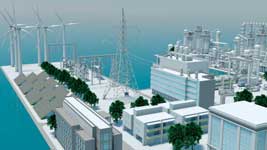 Hydrogen + fuel cell: components for energy generation
Hydrogen + fuel cell: components for energy generation
H2 can be in certain Materials penetrate and thereby change their structure. This can lead to cracks and breaks. Special alloys, coatings and material combinations reduce hydrogen absorption and maintain long-term material durability.
The requirements for the peripherals of hydrogen technologies have also changed. For operating one electrolyzer For example, ultra-pure water of very high quality is required, which is split into hydrogen and oxygen using electrical energy.
Ultrapure water monitoring in the electrolyzer
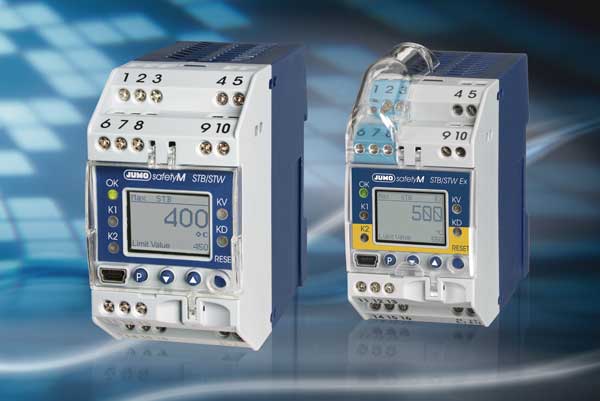 Electrolysers are available in different designs, all of which have an input size Ultrapure water work. In the electrolyzer, two electrodes are immersed in the water, the positive anode and the negative cathode.
Electrolysers are available in different designs, all of which have an input size Ultrapure water work. In the electrolyzer, two electrodes are immersed in the water, the positive anode and the negative cathode.
If an electric current is passed through the water, the ultrapure water H splits2O on the electrodes in his gaseous components H2 and O2 on. The gases produced are collected separately and can then be used for various applications or further processed for storage.
PEM electrolyzers for example, have a membrane that separates the anode and cathode to separate oxygen from hydrogen. In alkaline electrolysers, on the other hand, a solution serves as an electrolyte that transports the ions between the electrodes in parallel.
An important measurement for the electrolyzer is the constant monitoring and control of the quality of the ultrapure water at the inlet. This is done using conductive measuring probes, which output the conductivity in µS/cm. This constant monitoring protects against damage, guarantees the longest possible service life of the components and extends maintenance intervals.
Measurement technology for hydrogen production
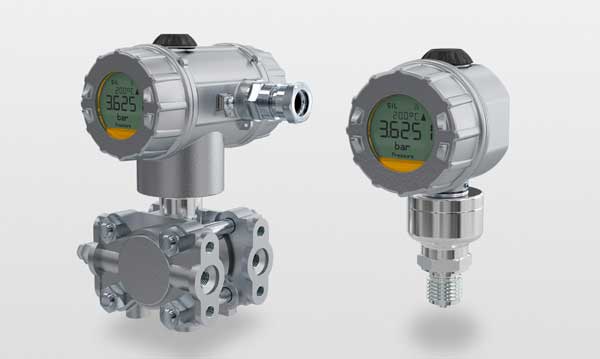 Auch Jumo feels a significant revival in the hydrogen business and sees enormous growth opportunities in this area. The company adapts its measurement technology for use in the Hydrogen technology at. If necessary, this will be certified accordingly. For this purpose, the existing production facilities have only been slightly modified. The necessary increases in unit numbers can often be achieved from the production reserve.
Auch Jumo feels a significant revival in the hydrogen business and sees enormous growth opportunities in this area. The company adapts its measurement technology for use in the Hydrogen technology at. If necessary, this will be certified accordingly. For this purpose, the existing production facilities have only been slightly modified. The necessary increases in unit numbers can often be achieved from the production reserve.
In addition to extensive safety precautions, handling hydrogen also requires measurement expertise. This applies to the production of hydrogen from ultra-pure water as well as to feeding the electrolyzer or monitoring the electrolytic conductivity. Digital, explosion-proof pressure- And Temperature Sensors from Jumo ensure the monitoring and security of the thermodynamic processes. Numerous DAX-listed companies in German industry install these solutions in their systems.
Two such measurement systems are conductive Conductivity sensors "Tecline CR" and "Digiline CR". As a development partner for sensor and automation solutions, Jumo also offers individual system solutions for customer-specific electrolyzer concepts.
Hydrogen and the future
Hydrogen has been around for decades important raw material in various industries. In the chemical industry, H2 used to produce methanol, ammonia and other products. In the oil refinery, H2 used in the desulfurization of fuels. Its climate-neutral production enables the decarbonization of the industry. In addition, the industry is opening up great opportunities in many new applications to achieve climate neutrality.
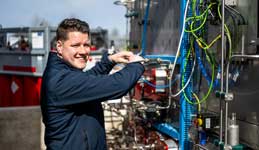 IO module secures Resato hydrogen filling stations
IO module secures Resato hydrogen filling stations
The energy intensive one heavy industry has begun to set the course for hydrogen as a fuel for steel production and would like to use it to reduce CO 2 emissions. In transportation, hydrogen is seen as the fuel of the future for fuel cells. The technology is particularly being promoted as an energy source in buses and trains, in heavy goods transport, in shipping and in aviation. In the energy supply network, hydrogen can serve as long-term storage and, for example, compensate for fluctuations in electricity generation, be distributed via the gas network or converted into heat.
Possible areas of application for H2
The possible areas of application become more competitive as the availability of green hydrogen become more attractive. There is further potential in the widespread use of hydrogen as part of sector coupling. Hydrogen is the connecting link by means of so-called Power-to-X Technologies. The properties and possible applications of hydrogen will pave the way for efficiently connecting sectors such as power generation, heat supply, transport and industry.
Frequently asked questions
How can hydrogen be produced?
Hydrogen can be produced primarily through the following processes:
- electrolysis: Water (H 2 O) is split into hydrogen (H 2) and oxygen (O 2) using an electric current. If the electricity used comes from renewable energies, the hydrogen produced in this way is called “green hydrogen”.
- Steam reforming of natural gas: Natural gas (mainly methane, CH 4) is combined with steam at high temperatures and pressure to produce hydrogen and carbon dioxide (CO₂). This is currently the most commonly used method, but results in “gray hydrogen” as CO₂ is released.
- Thermal decomposition of Methane (Pyrolysis): Methane is heated in a heat-resistant reactor, producing hydrogen and solid carbon without releasing CO₂. This process can result in “turquoise hydrogen” if the energy comes from sustainable sources.
- hydrogen out biomass (Bio-Hydrogen): Hydrogen can also be produced through gasification or pyrolysis of biomass. This process can vary depending on what technology and raw materials are used.
How much electricity do you need for 1 kg of hydrogen?
For the production of 1 kg of hydrogen Electrolysis requires around 50 to 55 kWh of electrical energy, depending on the efficiency of the system and the operating conditions. This value may vary based on the electrolysis process and the efficiency of the entire system.
What do you need to produce hydrogen?
To produce hydrogen you essentially need:
- An energy: Electrical energy is required for electrolysis. The sustainability of hydrogen production depends on whether renewable energy sources such as wind, solar or hydropower are used.
- Water: Electrolysis uses water (H₂O) as a raw material, which is split into hydrogen (H₂) and oxygen (O₂).
- A Electrolyzer: A device that performs electrolysis. It uses an anode and cathode in an electrolyte to split water into hydrogen and oxygen.
- For other manufacturing processes like that Steam reforming requires natural gas and a catalyst, while biomass gasification requires organic materials.
How much water does it take to produce hydrogen?
It takes approximately 1 kg of hydrogen to be produced by electrolysis 9 liters of water. This value may vary slightly depending on the efficiency of the electrolysis process and the specific operating conditions.
You might also be interested in...
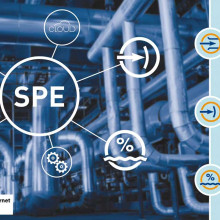
Jumo Campus for sensors and measurement technology
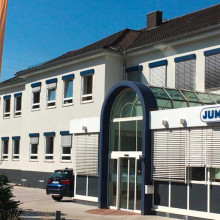
Jumo | The 75-year-old system and solution provider
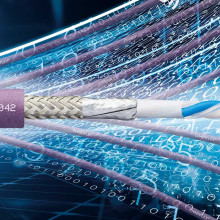
Single Pair Ethernet | for IIot and Industry 4.0
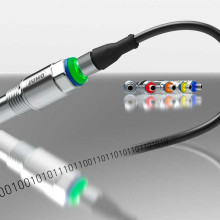
Level sensor | Level switch for simple to IIoT use
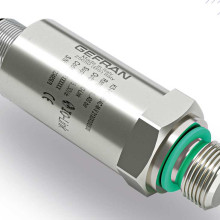
Pressure sensors | Pressure measurement technology goes digital

Control Fair 2024 | The industry is already looking forward to Stuttgart

Rainer Moritz is industry manager for renewable energies at Jumo in Fulda.
